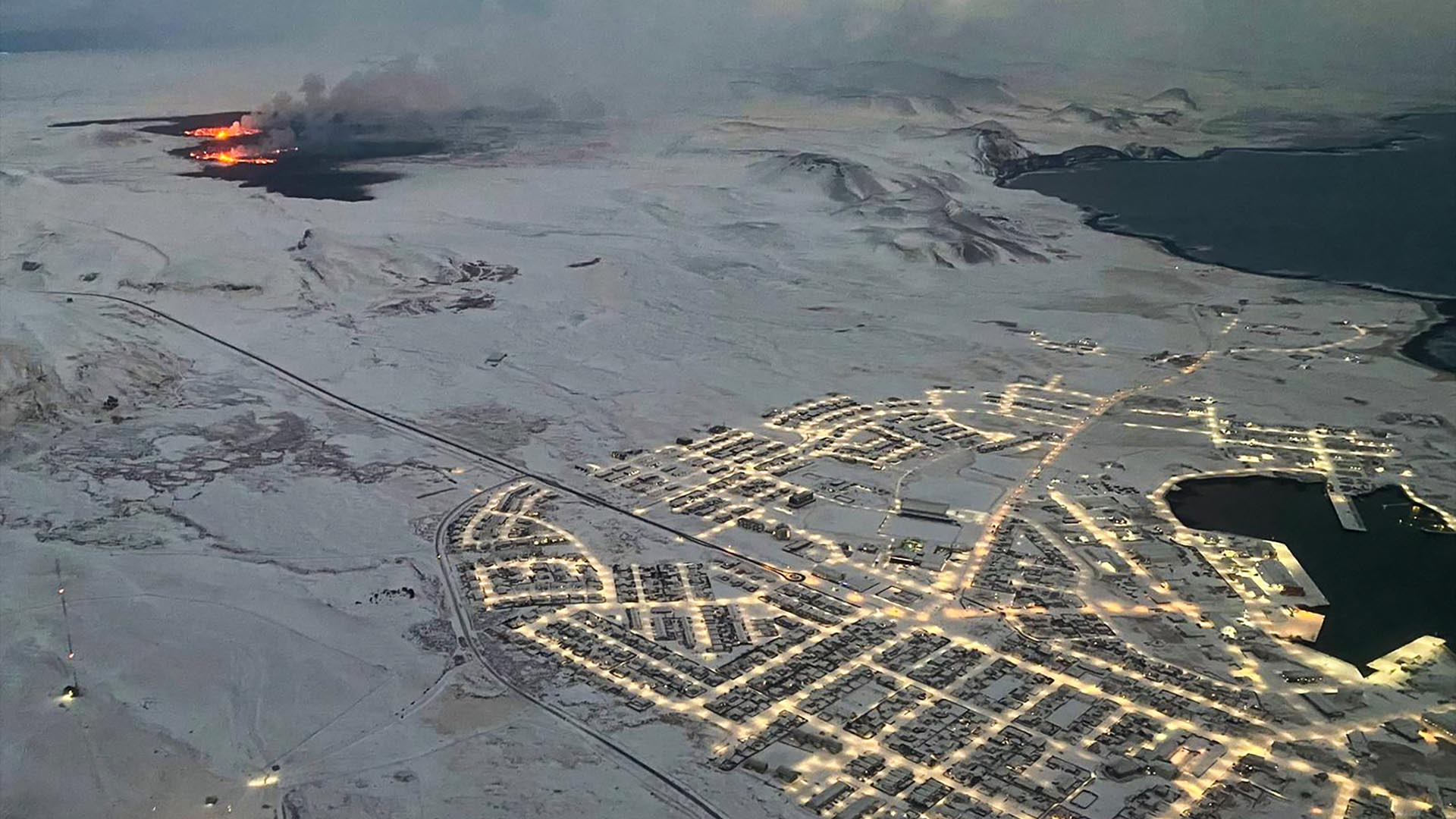Iceland villages in danger of 'crack collapse,' ground swelling following volcanic eruption
The ground below the Icelandic fishing town of Grindavík is so fissured and unstable following the volcanic eruption earlier this month that it could collapse, officials have warned.

The ground beneath Grindavík, a small fishing town on Iceland's Reykjanes Peninsula, is so fissured following a volcanic eruption on Jan. 14 that it could collapse, the Icelandic Met Office (IMO) has warned.
This "crack collapse" may occur in places where the ground is already unstable, according to a translated IMO statement updated on Thursday (Jan. 25).
Fissures that opened to the north of Grindavík sent lava flows coursing through the town during the eruption, which has since ended. The overall risk assessment for Grindavík was subsequently lowered from great (red) to considerable (orange) on a hazard map, but new dangers now loom over — or in this case under — the town.
"It should be noted that although the overall risk assessment for Grindavík has been lowered by one point, the risk associated with cracks is still assessed as very high," IMO representatives wrote in the statement.
Related: Heat bursts from Iceland's recent eruptions in eerie NASA satellite image
"Fissure movements" are less likely now that the eruption has subsided, they added, and experts are assessing the risk of new cracks opening, or of already-formed cracks growing larger.
"GPS data shows that very little movement has been detected within Grindavík in the last few days, and therefore the risk is estimated to be lower than before," representatives wrote in the statement.
Sign up for the Live Science daily newsletter now
Get the world’s most fascinating discoveries delivered straight to your inbox.
"The area has been reactivated," Carmen Solana, an associate professor in volcanology and risk communication at the University of Portsmouth in the U.K., previously told Live Science. While experts can't be sure whether another eruption will take place, Solana said the current signs suggest it is likely.
"The fact that it [the ground] hasn't deflated as it should given the volume [of magma] that has come to the surface, it's more likely than not that more magma will come to the surface," she said.

Sascha is a U.K.-based staff writer at Live Science. She holds a bachelor’s degree in biology from the University of Southampton in England and a master’s degree in science communication from Imperial College London. Her work has appeared in The Guardian and the health website Zoe. Besides writing, she enjoys playing tennis, bread-making and browsing second-hand shops for hidden gems.









